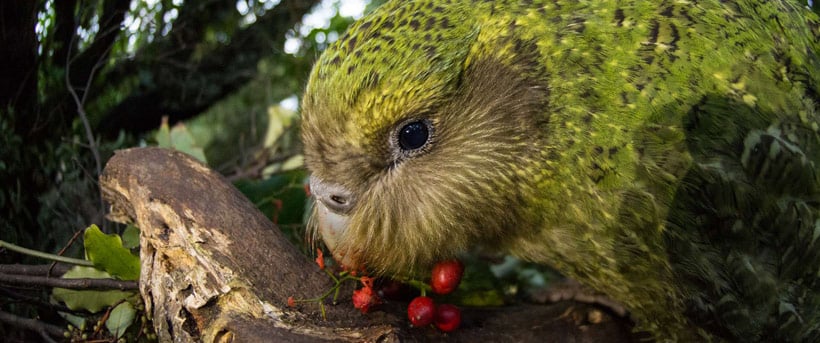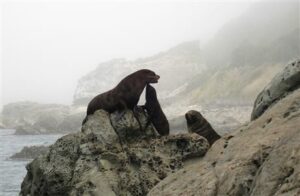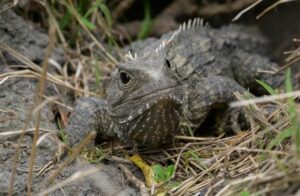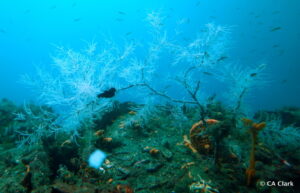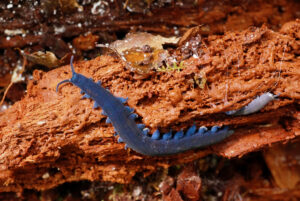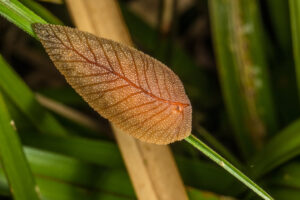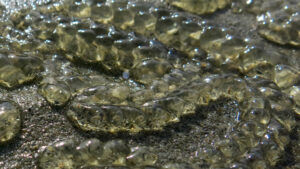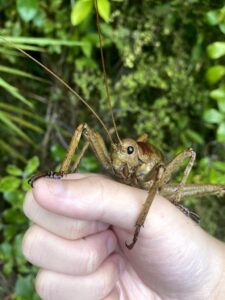If you’re taking part in the Summer Reading Adventure this year you’ll have come across a few different challenges that ask you to go outside and take a close look at what’s around you. There’s The Upward Looking Urban Photographer which asks you to look upwards in a place familiar to you and spot something new, there’s On the Mountain – Matairangi Quest which challenges you to visit the Matairangi Nature Trail on Mount Victoria and tell us about something you learned or spotted there, there’s Nature’s Perfect Challenge where we ask you to use your senses to investigate the natural world around you, and of course there’s He Rapa Ngāngara te Mahi | The Great Bug Hunt where we challenge you to search out some creepy-crawlies outside.
One creature you might come across while you’re completing these activities is the pūngāwerewere (or spider), and we thought we’d share some of the really interesting things about spiders with you.
Have you heard of the strange phenomenon where spiders’ webs can blanket an entire area of plants including trees? The phenomenon is a survival tactic called ballooning and it is where spiders spin large webs which catch onto grass, shrubs and trees to escape threats like flooding. This happened a couple of years ago in the state of Victoria, Australia, after a storm caused flooding and left the ground covered in a ballooning blanket of webs.
Spiders are amazing creatures that have adapted to find all sorts of ways to survive. Sadly, they get a really bad rap as their scary appearance makes many people frightened of them. Did you know that the irrational fear of spiders is called Arachnophobia? This word comes from Greek mythology, where Arachne, a skilled weaver, was turned into a spider by the goddess Athena after winning a weaving competition with the goddess (Athena was not happy!).
20 fun facts about spiders
1) Spiders are not insects. Instead, spiders are known as arachnids because they only have two body segments instead of three. Other arachnids are scorpions, mites, and ticks.
Spiders are not insects. Instead, spiders are known as arachnids because they only have two body segments instead of three. Other arachnids are scorpions, mites, and ticks.
2) Spiders spin webs to catch other bugs to eat, but not all spiders make webs! Some actively hunt their prey and pounce.
3) Most spiders are not dangerous to humans.
4) The wolf spider carries her babies on her back with her.
5) Most spiders live on land, but a few, like the raft spiders, live in and on water. These spiders can “run” across the water’s surface.
6) On average, it takes a spider about 60 minutes to spin a web.
7) Spiders are just as valuable to the world as larger animals, but most people don’t realize it. Many spiders are becoming endangered and are disappearing due to loss of habitat (home).
8) The average house has 30 spiders.
9) You are always three feet away from a spider.
10) Grass spiders build a web on top of the grass. Their webs form a funnel shape, which is not sticky.
11) The silk strands in a web are 5x stronger than a piece of steel the same size.
12) Spiders have short hairs on their feet that allow them to walk upside down on ceilings and over glass.
13) Spiders are found everywhere in the world except for the cold polar regions of the Arctic and Antarctic.
14) The average life of a spider is one to two years. Although the female tarantula may live up to 20 years!
I’m trying to love spiders : (it isn’t easy) / Barton, Bethany
“This fresh and very funny non-fiction picture book shares lots of fascinating facts about spiders in an entirely captivating way. If I’m Trying to Love Spiders doesn’t cure your spider phobia, it’ll at least make you appreciate how amazing they are…and laugh a lot as you learn about them.”– Provided by publisher.” (Catalogue)
Bug lab for kids : family-friendly activities for exploring the amazing world of beetles, butterflies, spiders, and other arthropods / Guyton, John W.
“Prepare to cozy up with spiders, centipedes, butterflies, and bees, to name just a few! In Bug Lab for Kids, Mississippi State University associate professor, extension entomologist (bug expert), and educator John W. Guyton shares his knowledge and excitement about all things beautiful, creepy, and crawly.” (Catalogue)
Australia’s most dangerous spiders– and their relatives / Riley, Kathy
“Dangerous to people or not? Learn how to recognise the most deadly spiders – and how to help someone who has been bitten. Discover the amazing tricks spiders use to catch plenty of insects for their dinner. Find out how to tell thich sipder made the huge web that appeared in your garden overnight. Inspect some astonishing close-up photos of spiders on the hunt for food or hiding from their enemies.” (Catalogue)
Insects and spiders / Parker, Steve
“A first nature book about insects and spiders for children, this is the perfect companion for young minds eager to learn about the world of bugs. Children are encouraged to investigate and record all the creepy crawlies they find, and get hands on with the fun activities, from making your own bug hotel to collect insects in to building an ant farm.With a mix of fantastic photographs and beautiful illustrations Insects and Spiders takes you through everything you need to know about these minibeasts. Learn what termites build their nests from, how an earwig looks after her eggs, and why wasps have black and yellow stripes.” (Catalogue)
Want to read some fiction books that feature spiders?
Sam Wu is NOT afraid of spiders! / Tsang, Katie
“The brilliantly funny fourth book in the SAM WU series, starring the bravest scaredy-cat in the world! Perfect for reluctant readers and fans of Tom Fletcher, Pamela Butchart and Humza Arshad’s Badman. Sam Wu is NOT afraid of anything. Well, maybe some things. Like ghosts, sharks … the dark’s pretty worrying too. And not to mention SPIDERS! But Sam’s not going to let anyone know. And so when Tulip, the school tarantula, disappears from her cage, Sam decides it’s up to him and his friends to save the school from the eight-legged escapee … Common childhood fears dealt with in a hilarious, sensitive and accessible way. ding charity, and also writes YA fiction as Katherine Webber.” (Catalogue)
Charlotte’s web / White, E. B.
“One spring morning a little girl called Fern rescues a runt and names him Wilbur. But then Wilbur is sent to live on a farm where he meets Charlotte, a beautiful large grey spider. They become best friends and, when Wilbur is faced with the usual fate of nice fat little pigs, Charlotte must find a clever way to save him.” (Catalogue)
The spider’s song / Longstaff, Simon
“The Spider’s Song is a remarkable debut children’s book, written by Simon Longstaff and illustrated by Dutch artist Marc Van de Griendt. Lose yourself in the enchanted world of The Boffin, who as a young science prodigy dared to compete with Mother Nature and create his very own perfect world. Years go by and the Boffin enjoys his solitude, inventing creatures most bizarre: ovelwoozers, worralots, midbits and phtphts, each more weird and wonderful then the next. That is until a clever spider and a curious girl venture into his world to teach him the most important lesson of all, one he won’t find in any textbook or lab. With subtle messages woven throughout, The Spider’s Song teaches adults and children alike the value of nature, acceptance, humanity and friendship.” (Catalogue)
The very busy spider / Carle, Eric
“The farm animals try to divert a busy little spider from spinning her web, but she persists and produces a thing of both beauty and usefulness. The pictures may be felt as well as seen.” (Catalogue)
Sophie’s masterpiece : a spider’s tale / Spinelli, Eileen
“Sophie the spider makes wondrous webs, but the residents of Beekman’s Boarding House do not appreciate her until at last, old and tired, she weaves her final masterpiece.” (Catalogue)
Stink and the hairy scary spider / McDonald, Megan
“Creepy! Crawly! Criminy! Stink is bonkers about most scientific things. But dangle a spider in front of him and he goes berserk! Stink is so freaked out by spiders that he can’t read about them. He can’t look at them. He can’t think about them. And he for sure can’t touch them! Stink has arachnophobia (a fear of spiders), and he has it bad. But when a hairy backyard emergency arises, Stink is forced to face his fear–and eight beady eyes–head-on. Will he manage to tame the heebie-jeebies, or will he remain stuck in his web of tarantulan terror? ” (Catalogue)
